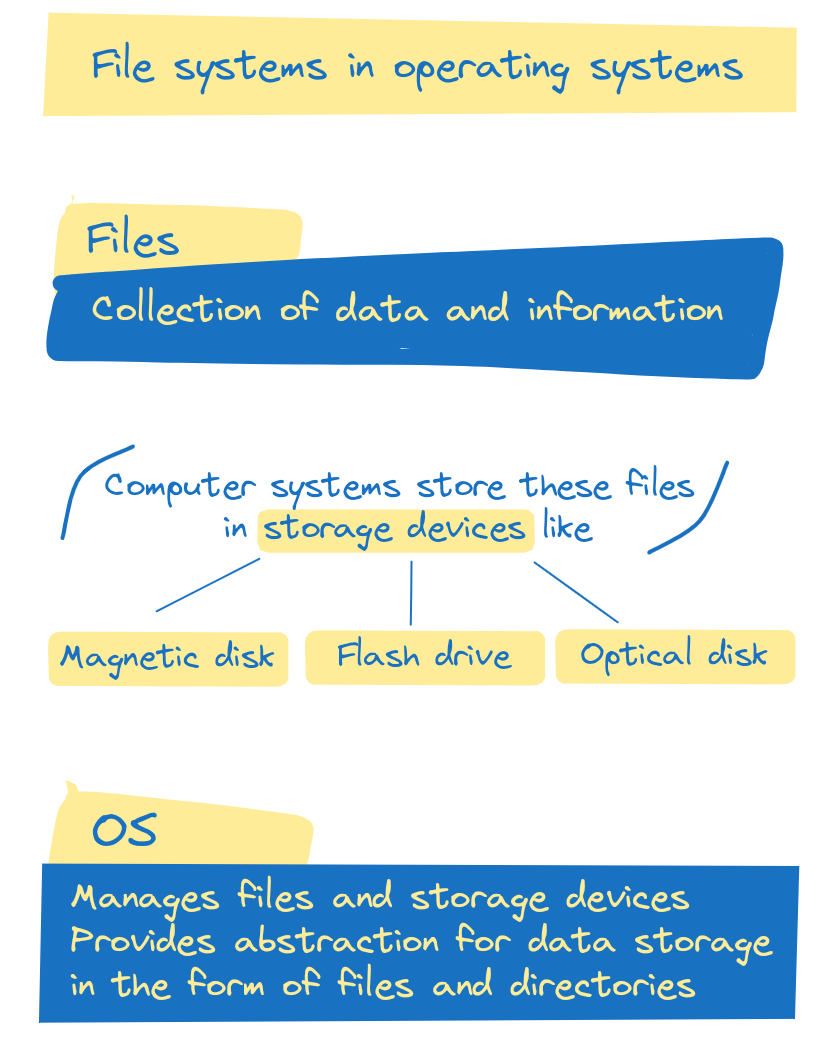File Systems in Operating Systems
In this lesson, we will learn:
- How files are organized on computer systems
- Techniques used by the OS to manage files
Computer systems store tons of user files. For us, these are documents, pictures, videos, etc. For the computer, they are just sequences of bits.
The OS stores files on persistent storage devices like hard drives. Unlike memory, persistent storage keeps data intact even when powered off.
The OS plays a key role in:
- Organizing files on storage devices
- Managing read/write access
- Ensuring performance and reliability
It does this through the file system.
What is a File System?
A file system is how the OS organizes and manages files on a storage device. Key responsibilities include:
- Storing files and metadata
- Organizing the storage hierarchy
- Managing free vs used space
- Access control and security
- Caching and buffering reads/writes
The file system provides structure to raw persistent storage. It enables reliable long-term file storage and efficient access.

In this lesson, we'll learn how operating systems implement and manage file systems. This covers critical OS functionality like:
- File organization and directory structure
- Allocating disk space
- Access control
- Buffering and caching
Let's get started!

